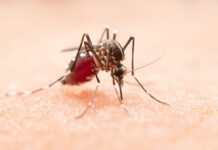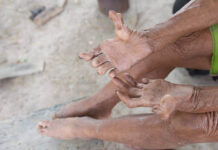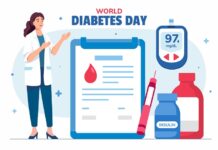WHO has defined health as a state of complete physical, mental, and social well-being, not merely the absence of disease.[1] We gynecologists are often the primary health care providers for women, particularly in the reproductive age group. Reproductive health is defined as a state of physical, mental, and social well-being in all matters relating to the reproductive system, at all stages of life. Good reproductive health implies that people can have a satisfying and safe sex life, the capability to reproduce, and the freedom to decide if, when, and how often to do so.
One common cancer leading to much mortality and morbidity in the reproductive years, and linked to sexual activity is Cancer Cervix. January has been designated as “Cervical Health Awareness Month” and all of us have to become torch-bearers of the cause to champion early detection, down-staging, and if possible, prevention of this dreaded disease.
In many respects, cancer is a preventable disease. Estimates indicate that approximately one-half of all cancer cases either arise from modifiable risk factors or can be detected as precursor lesions before the development of disease with metastatic potential.
Prevention of Cancer can Take Place on Several Different Levels
Primordial prevention includes health counseling, sex education, and appropriate information regarding HPV vaccination. Primary prevention addresses the cause of cancer, so disease does not occur. Secondary prevention identifies disease before the onset of symptoms and keeps it from becoming more extensive (screening). Tertiary prevention reduces complications and progression of disease once it has become clinically apparent.
Screening for cancer is done to detect disease among healthy populations without symptoms of disease to decrease mortality through early detection andappropriate treatment. Cervical cancer represents one such condition that is highly appropriate for screening, as it fulfills the criteria listed below:
- High prevalence of disease
- Known natural history, precursor lesion, and course of progression
- Detection of early-stage disease, amenable to cure
- Diagnostic methods used are simple, cheap, specific and sensitive, acceptable, risk-free, and accessible
Cancer is the major cause of morbidity and mortality worldwide, and in our country too. National Cancer Registry Programme statistics for India 2020 showed many variations in the incidence of cervical cancer between states, and districts within states too, ranging from 5.5 to 26.1% of reported cancers.[2]
Infectious exposures have been described as triggers for Cervical and anogenital cancers (human papillomavirus [HPV]). Out of the 12 high-risk types of HPV strain, HPV 16 and 18 are responsible for most of the HPV-related cancers. All controlled trials have indicated that the HPV vaccine reduces the risk of HPV infection thus in turn reducing the risk of cervical cancer.
One study saw higher amounts of cervical dysplasia possibly because the 21-24-year-old population of women in the study were getting their HPV vaccine during their colposcopy procedure and had already developed cell changes due to HPV infection.[3]
The WHO 90-70-90 targets for the global strategy to eliminate cervical cancer propose that 90% of girls be fully vaccinated with the HPV vaccine by age 15, 70% of women be screened by 35 years of age, and 90% of women identified with pre-cancer or cancer receive treatment. The primary method for preventing cancer cervix is vaccinating adolescents against HPV.
1Professor & Head of Dept, Obstetrics & Gynecology, HBT Medical College and
Dr R N Cooper Municipal Hospital, Juhu.
2Program Associate, CFI (Cancer Foundation India)
Corresponding Author: Dr. Reena Wani, Professor & Head of Dept, Obstetrics & Gynecology, HBT Medical College & Dr R N Cooper Municipal Hospital, Juhu. Email: reena.wani@rediffmail.com
However, many low and middle-income countries have yet to initiate HPV vaccination programs while many which have initiated are facing challenges in maintaining high uptake of vaccination. Continued scale-up and improvement of prevention, screening, and treatment measures are crucial in achieving cervical cancer elimination.[4]
The cancer burden varies within the regions of India posing great challenges in its prevention and control. [2] The national burden assessment remains a task that relies on statistical models in many developing countries, including India, due to cancer not being a notifiable disease. An ICMR study quantified the cancer burden in India for 2016, adjusted mortality to incidence (AMI) ratio, and projections for 2021 and 2025 from the National Cancer Registry Program (NCRP) and other publicly available data sources. More than 40% of the total cancer burden was contributed by the seven leading cancer sites — lung (10.6%), breast (10.5%), esophagus (5.8%), mouth (5.7%), stomach (5.2%), liver (4.6%), and cervix uteri (4.3%).[5]
Cervical cancer is the fourth most common cancer worldwide, and the second most common cancer among females in India. Cervical cancer is associated with the prevalence of human papillomavirus and lower socioeconomic status. It currently accounts for about 10% of all female cancers, though the incidence is decreasing. The first population-based survival study from Bangalore, India reported a 5-year cervical cancer survival rate of 38.3%.[6]
The incidence of cervical cancer has dropped in India over the last 50 years from 45 to 10 per 100,000 population. The decline is because of late marriages, fewer children, better hygiene, and vaccination (human papillomavirus vaccine (HPV)).[7]
According to WHO recommendations, girls aged 9-14 years before sexual activity are the primary target population for HPV vaccination to prevent cervical cancer. Despite this, there has been much resistance and reluctance to accept vaccination as an important tool in the fight against cervical cancer. Certainly, to change thoughts and spread information different strategies are needed.
Health-related slogans have been devised like “With the HPV shot, your health’s in the right spot” and “Take the lead, protect and heed, the HPV vaccine is what you need.” These are meant to target the population a trisk.
WHO Recommendations on HPV Vaccination for Cervical Cancer
- A 1 or 2-dose schedule for girls aged 9-14 years
- A 1 or 2-dose schedule for girls and women aged 15-20 years
- 2 doses with a 6-month interval for women aged >21 years
Priority for vaccinations should be given to those who are immuno compromised or women living with HIV. Immuno compromised patients should receive at least 2 doses and 3 doses, where possible.
“One of the greatest freedoms is the freedom from avoidable ill health and escapable mortality” Prof Amartya Sen, Nobel Laureate. How can we as a nation catch up with the Western world in this disease? There is no easy answer since we have so much diversity in healthcare sector patterns even within the same geographic zones, let alone different states and rural areas. There is a dearth of comprehensive national screening programmes and most of us do opportunistic screening.
Let us rise to the challenge and develop robust strategies to be aware of cervical health and screen/ treat at every available opportunity. Each one saves one- that will be the beginning!
References
- Park K. Textbook of Preventive and Social Medicine. 27th Edition: Banarasidas Bhanot Publishers, 2023. p:13.
- National Centre for Disease Informatics and Research. Factsheet – National Cancer Registry Programme – 2020. [Online] Available fromhttps://ncdirindia.org/All_Reports/Report_2020/default.aspx [Accessed 30 Nov 2023].
- Andersson L. RETRACTED: Increased incidence of cervical cancer in Sweden: Possible link with HPV vaccination. Indian J Med Ethics. 2018 Apr 30;-(-):1-5. Retraction in: Indian J Med Ethics. 2018 May 26:1.
- Cancer Screening & Treatment. [Online] Available from https://www.usaid.gov/global-health/health-areas/hiv-and-aids/technical-areas/cervical-cancer-screening-treatment# [Accessed 30 Nov 2023].
- Kulothungan V, Sathishkumar K, Leburu S, Ramamoorthy T, Stephen S, Basavarajappa D, Tomy N, Mohan R, Menon GR, Mathur P. Burden of cancers in India-estimates of cancer crude incidence, YLLs, YLDs and DALYs for 2021 and 2025 based on National Cancer Registry Program. BMC cancer. 2022 May 11;22(1):527.
- Sathishkumar K, Sankarapillai J, Mathew A, Nair RA, Gangane N, Khuraijam S, Barmon D, Pandya S, Majumdar G, Deshmane V, Zomawia E. Survival of patients with cervical cancer in India–findings from 11 population based cancer registries under National Cancer Registry Programme. The Lancet Regional Health-Southeast Asia. 2023 Oct 13.
- Bobdey S, Sathwara J, Jain A, Balasubramaniam G. Burden of cervical cancer and role of screening in India. Indian J Med Paediatr Oncol. 2016 Oct-Dec;37(4):278-285.























